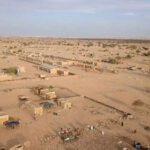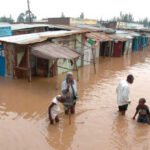The United States Agency for International Development (USAID) has deployed a disaster response team to coordinate humanitarian response for victims of the fighting in Sudan.
Development Diaries reports that fighting between the Sudanese army and the Rapid Support Forces (RSF) continued over the weekend, with more than 400 deaths recorded since 15 April.
Tensions escalated after the RSF started deploying members around the country and in Khartoum without the expressed permission of the army.
It is understood that about 100,000 Sudanese have fled their homes as the near-constant shooting and bombing in Khartoum and elsewhere has cut electricity and safe access to food and water for much of the population.
‘Our disaster experts are working with the international community and our international partners to identify priority needs and to safely deliver life-saving humanitarian assistance to those who need it most’, USAID head, Samantha Power, said.
The US has warned of shortages of vital medicines, food and water as efforts are being intensified to evacuate foreign diplomats and citizens from Khartoum.
In a statement, the World Health Organisation (WHO) said that a quarter of the dead in Sudan could have been saved if paramedics had been able to reach the injured.
The African Union (AU) has condemned the violence in the country and called for an immediate and unconditional humanitarian ceasefire.
In a communique released at the end of a special ministerial meeting, the AU demanded that the Sudanese Armed Forces (SAF) and the Rapid Support Forces (RSF) establish humanitarian corridors and allow for unhindered humanitarian access and evacuation of injured civilians.
‘Recognising that the deliberate targeting of civilians constitutes a serious violation of international humanitarian law and human rights law, [participants] therefore call on the SAF and RSF to fulfill their international legal obligations’, the communique read in part.
It also demanded that they urgently address the rehabilitation of critical basic infrastructure, in particular, water and electricity utilities, and ensure access by the civilian
Photo source: Dabanga





